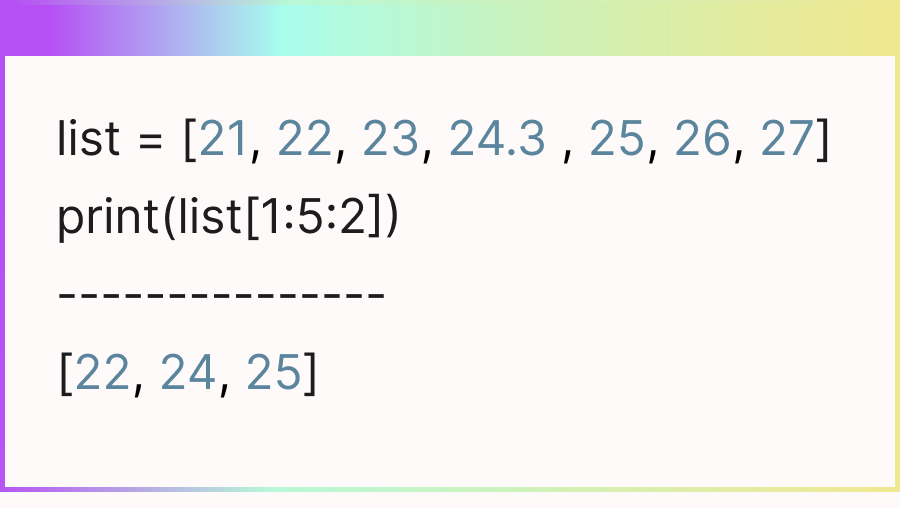【Python数据结构揭秘】:列表与数组,选择使用技巧大比拼
发布时间: 2024-09-12 02:28:25 阅读量: 15 订阅数: 26 


# 1. Python数据结构概述
Python作为一种高级编程语言,提供了多种高效的数据结构,以支持开发者在处理数据时更加游刃有余。在本章中,我们将重点探讨Python中的基础数据结构——列表(List)和数组(Array)。列表是Python中的内置复合数据类型,它是一个有序的元素集合,可以包含任意类型的对象。而数组则是一个适合处理数值型数据的序列类型,通常由特定模块支持,例如`array`模块。
列表与数组在许多方面表现不同,选择合适的类型可以大幅提高程序性能和降低内存消耗。我们从这两个数据结构的定义出发,逐渐深入到它们的应用和性能比较,以帮助读者在不同的编程场景中做出明智的选择。
在后续章节中,我们将详细讨论这两种数据结构的创建、操作、高级特性以及性能分析,最终提供实用的替代方案和实际案例分析,帮助读者在实际工作中快速应用所学知识。
# 2. 列表与数组的基础知识
### 2.1 列表(List)的定义与操作
列表是Python中最基本的数据结构之一,它是一个有序的集合,可以随时添加和删除其中的元素。列表的元素可以是不同的数据类型,包括整数、浮点数、字符串甚至其他列表。
#### 2.1.1 列表的创建与基本属性
创建一个列表非常简单,只需将多个值用方括号括起来,并使用逗号分隔即可。例如:
```python
my_list = [1, 2, 3, 'a', 'b', 'c']
```
列表的基本属性包括长度、类型和可变性。列表长度可以通过`len()`函数获取,列表类型是`list`,并且列表是可变的,这意味着我们可以修改列表的元素。
#### 2.1.2 列表的增删改查操作
- **增加**:可以使用`append()`方法在列表末尾添加元素,或者使用`insert()`在指定位置插入元素。
- **删除**:可以使用`remove()`方法删除指定元素,`pop()`方法移除指定位置的元素,或者使用`del`语句直接删除指定位置的元素。
- **修改**:直接通过索引访问元素并赋值进行修改。
- **查询**:可以使用`index()`方法查找元素位置,或者使用切片操作获取子列表。
```python
# 增加元素
my_list.append(4) # [1, 2, 3, 'a', 'b', 'c', 4]
my_list.insert(0, 'start') # ['start', 1, 2, 3, 'a', 'b', 'c', 4]
# 删除元素
my_list.remove('a') # ['start', 1, 2, 3, 'b', 'c', 4]
removed_element = my_list.pop(3) # 3
del my_list[3] # ['start', 1, 2, 'b', 'c', 4]
# 修改元素
my_list[0] = 'new_start' # ['new_start', 1, 2, 'b', 'c', 4]
# 查询元素
position = my_list.index('b') # 3
sub_list = my_list[1:4] # [1, 2, 'b']
```
列表是动态的,这意味着我们可以根据需要动态地调整列表的大小。
### 2.2 数组(Array)的定义与操作
数组在Python中并不是一个内置的数据类型,但在实际应用中,我们常常会用`array`模块来创建数组。Python中的数组可以看作是列表的一个特殊形式,它在存储元素时更为紧凑。
#### 2.2.1 使用array模块创建数组
首先,需要导入`array`模块,并指定数组元素的类型代码。类型代码`'i'`代表整数,`'d'`代表双精度浮点数等。
```python
import array
# 创建一个整型数组
my_array = array.array('i', [1, 2, 3, 4, 5])
```
数组一旦创建,类型代码就固定下来,之后不能添加不同类型的元素。
#### 2.2.2 数组的特定操作和优势
数组相比列表在内存使用上更为高效。当你知道所存储元素的类型并且这些类型不经常改变时,使用数组可以节约内存。此外,数组提供了更多与数组相关的操作,如数值计算。
```python
# 数组操作
my_array.append(6) # [1, 2, 3, 4, 5, 6]
my_array.extend([7, 8]) # [1, 2, 3, 4, 5, 6, 7, 8]
```
使用数组时,需要注意的是,由于数组专注于存储一种类型的元素,因此它的灵活性不如列表,但性能往往更优。
### 2.3 列表与数组的选择标准
当决定使用列表还是数组时,需要权衡内存使用效率和性能考量。
#### 2.3.1 内存使用效率对比
列表由于可以存储任意类型的对象,因此在存储简单类型(如整数、浮点数)时,内存使用效率不如数组。使用`sys`模块的`getsizeof()`函数可以比较不同类型存储的大小。
```python
import sys
size_list = sys.getsizeof([1, 2, 3, 4, 5]) # 列表占用的内存大小
size_array = sys.getsizeof(array.array('i', [1, 2, 3, 4, 5])) # 数组占用的内存大小
```
#### 2.3.2 性能考量:速度与灵活性
在大多数情况下,列表的灵活性使其更加方便,但数组在处理数值计算时通常会更快,因为它直接操作内存中的连续数据块。性能测试可以使用`timeit`模块。
```python
import timeit
# 测试列表和数组在数值计算中的性能差异
time_list = timeit.timeit('[i * 2 for i in range(1000)]', number=100)
time_array = timeit.timeit('array.array("i", [i * 2 for i in range(1000)])', number=100)
```
通过这样的测试,我们可以得出在特定场景下哪种数据结构表现得更优。
现在,我们已经探讨了列表和数组的基础知识,包括定义、操作、优势和选择标准。在下一章中,我们将深入探讨列表与数组的高级特性及其在算法中的应用。
# 3. 列表与数组的高级特性与应用
## 3.1 列表的高级特性
### 3.1.1 列表推导式和高阶函数
在Python中,列表推导式提供了一种简洁的方法来创建和操作列表。它不仅减少了代码的编写量,还提高了可读性。下面是一个简单的列表推导式示例,用于生成一个0到9的平方数列表:
```python
squares = [x**2 for x in range(10)]
```
这段代码的逻辑是:`for x in range(10)` 创建一个从0到9的数字序列,`x**2` 计算每个数字的平方,`[...]` 将结果收集到一个新列表中。使用列表推导式可以有效地替代循环结构,并减少代码的复杂性。
高阶函数是那些至少满足下列条件之一的函数:接受一个或多个函数作为参数,或返回一个函数作为结果。Python中的一些内建高阶函数,如`map`、`filter` 和 `reduce`,都能在列表操作中发挥作用。
例如,使用 `map` 函数可以将一个函数应用于一个序列的所有元素,下面的代码展示了如何使用 `map` 将 `square` 函数应用于0到9的每个数字:
```python
def square(x):
return x ** 2
squares =
```
0
0





